5 Essential Factors for Choosing the Best Protective Cup for Lacrosse5 Essential Factors for Choosing the Best Protective Cup for Lacrosse
Focus on Comfort and Fit
When choosing a protective cup for lacrosse, one of the most important factors to consider is comfort and fit. An ill-fitting or uncomfortable cup can cause distractions on the field, hamper athletic performance, and potentially lead to injuries if it shifts out of place. The best lacrosse cups have an ergonomic design contoured to the shape of the athlete’s body for a secure and customizable fit.
Look for cups with adjustable straps, stretch jock fabrics, and molded cups that conform to your anatomy. The cup should fit snugly without restricting range of motion or causing chafing, rubbing, or irritation during intense game play. Carefully measure your waist size and consult sizing charts to find the right cup size for you. Trying on different cups and jock straps is recommended for finding an optimal personal fit.
Cups with ventilated mesh, moisture-wicking fabrics, and breathable designs will be more comfortable to wear for long periods of time. Prioritize cups crafted from lightweight materials to avoid fatigue and allow freedom of movement. Some players prefer a compression fit for maximum security and minimal shifting, while others opt for a loose fit with extra room in the cup pouch area.
Consider your personal preferences – do you want full coverage or a low profile fit? Look at the thickness and placement of protective padding and opt for maximum coverage across vulnerable areas. A cup that is too small can be painful and potentially dangerous, while an oversized cup may feel bulky and awkward on the field. Finding the right balance of comfort, performance, and protection should be the top priority.
Test different cups in practices and simulations before committing to a model for games. Break in the cup so it molds to your body. Having a properly fitted, comfortable lacrosse cup you hardly notice while wearing it will give you the confidence to perform your best.
Prioritize Protection and Safety
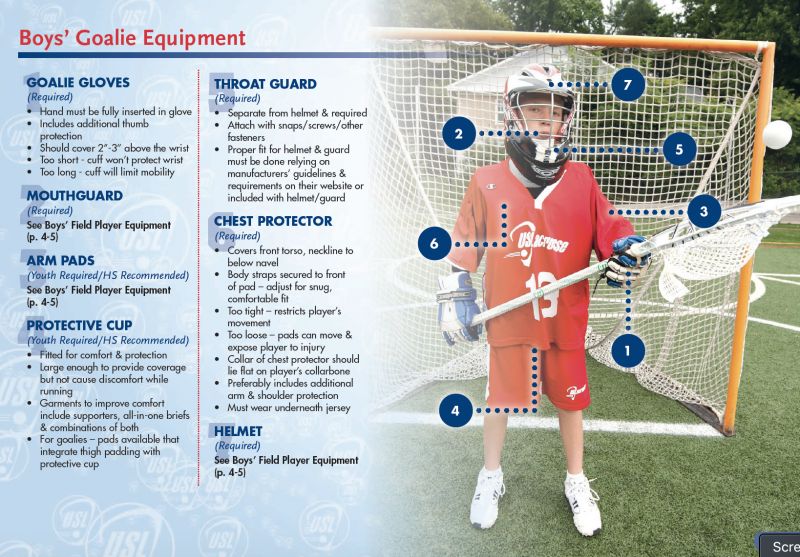
When playing a high-impact sport like lacrosse, protective gear is essential for minimizing injury risks during games and practices. One of the most vulnerable areas of the body is the groin, making a properly fitted protective cup one of the most important pieces of equipment for all lacrosse players.
Lacrosse involves high speed running, cutting, pivots, dodges, checks, and contact. Without adequate protection, the testicles and surrounding pelvic area are susceptible to bruising, trauma, and more serious testicular injuries. When evaluating lacrosse cups, prioritizing protection and safety is key.
Look for cups constructed with dense, shock-absorbing padding molded for coverage across the entire groin region. Multi-layer foam and ventilated gel padding increase protection and comfort. Rigid polyethylene or carbon fiber shells add an extra layer of security and impact resistance compared to soft cups alone.
Ensure the cup has an anatomical shape and extended sidewalls to protect the testicles from lateral blows and slashes. Well-designed cups disperse and deflect impacts away from the body. Breathable compression shorts with protective padded girdles can provide supplementary pelvic bone and hip padding.
For goalies, consider cups with extra thick foam padding on thighs and stomach areas for blocking shots. Field players running full speed should opt for streamlined, lightweight protection focused on the groin. Avoid cups with metal or plastic edges that could potentially cause injury in high contact collisions.
Carefully read product descriptions to understand the protective technologies utilized. Search for cups made of innovative materials like carbon nano-tubes and dual density foams. Seek out customer reviews from lacrosse players to hear real world feedback on a cup’s protection level.
While protection is vital, breathability and comfort are also key – an overly rigid or restrictive cup can potentially hinder performance. Find the right balance of maximum safety within your budget. Trying on different cup styles and taking experimental falls while wearing them can help determine the best option.
Protecting the body’s most sensitive areas ensures you can play hard with confidence and peace of mind. Prioritizing protection and safety when selecting a lacrosse cup allows you to focus on the game, not your gear.
Consider Breathability and Ventilation
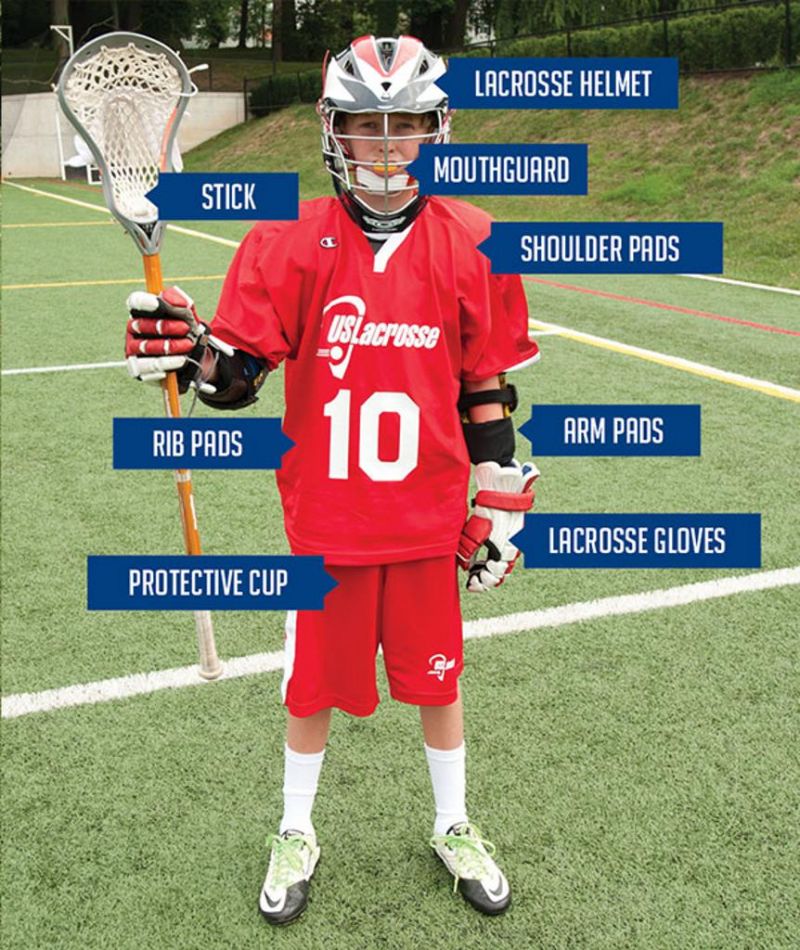
When playing intense sports like lacrosse, proper ventilation and breathability are essential considerations for comfort and preventing overheating. The groin area is especially prone to sweat buildup, chafing and irritation during athletic activity. When shopping for the best protective cup for lacrosse, be sure to prioritize breathable materials and ventilated cup designs.
Look for cups and jocks made of lightweight, moisture-wicking fabrics that draw sweat away from the skin. Mesh fabrics, ventilated pouches and strategic cutouts allow for enhanced air circulation to keep you cool and dry. Breathable compression shorts worn over the cup can also improve airflow and evaporation.
Proper ventilation helps prevent fungal and bacterial growth that can lead to rashes and skin infections in the groin area. Allowing heat and perspiration to escape keeps you comfortable and focused on the field. Overheating in the crotch region can quickly become a painful distraction.
Carefully inspect cup samples and product images looking for visible airflow vents, perforations and breathable fabrics. Read product descriptions and customer reviews to confirm adequate ventilation based on real-world use. Some synthetics like spandex and nylon have less breathability than natural fibers.
In hot, humid playing conditions, well-ventilated cups are essential. Even in cold weather, the groin region heats up quickly compared to the rest of the body. Proper airflow keeps you cool, dry and comfortable in any climate or temperature conditions during intense game play.
Some lacrosse cups feature removable pads or liners for adjustable ventilation levels. This allows you to increase breathability on hot days while adding insulation layers when needed. Airflow is also important for proper hygiene and reducing odor buildup over time.
While protection is the top priority, breathability and ventilation should not be overlooked. A cup that causes excessive sweating or discomfort can negatively impact performance. Finding a design that balances safety, comfort and airflow is key to enhancing your lacrosse game.
Look for Adjustability and Customization
- Measure your waist size accurately
- Consult sizing charts provided by manufacturers
- Try on different cups and jock straps
- Test the cup during practice sessions before using it in games
Is a compression fit better than a loose fit? This depends on personal preference. Some players prefer a snug compression fit for maximum security, while others opt for a looser fit with extra room in the cup pouch area. Experiment with both to determine which style suits you best.
Ensuring Maximum Protection and Safety on the Field
In a high-impact sport like lacrosse, protection is paramount. The groin area is particularly vulnerable to injuries, making a robust protective cup an essential piece of equipment.
What features should you look for in a protective lacrosse cup?
- Dense, shock-absorbing padding
- Multi-layer foam or ventilated gel padding
- Rigid polyethylene or carbon fiber shells
- Anatomical shape with extended sidewalls
- Innovative materials like carbon nano-tubes
Are there different protection requirements for different playing positions? Indeed, goalies may benefit from cups with extra thick foam padding on thighs and stomach areas to block shots effectively. Field players, on the other hand, might prefer streamlined, lightweight protection focused primarily on the groin area.
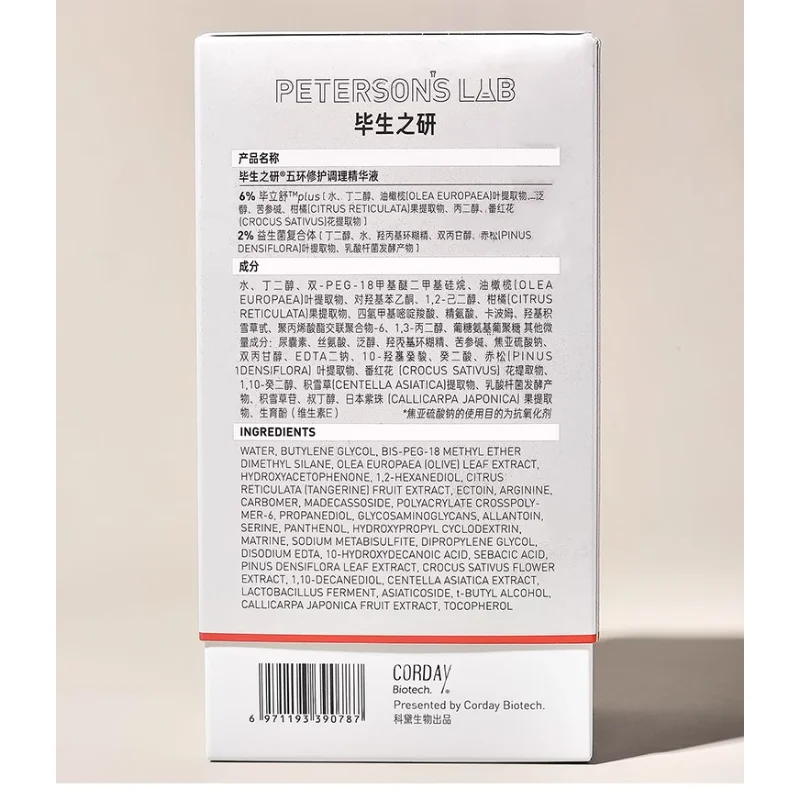
Balancing Protection with Performance
While safety is crucial, it’s essential to find a cup that doesn’t hinder your performance. How can you achieve this balance? Look for cups that offer maximum protection without being overly rigid or restrictive. Test different styles during practice to ensure they don’t impede your movement or speed on the field.
Enhancing Breathability and Ventilation for Comfort
Proper ventilation and breathability are vital for preventing discomfort and potential health issues during intense gameplay. The groin area is prone to sweat buildup, which can lead to chafing and irritation if not properly managed.
What features contribute to a well-ventilated lacrosse cup?
- Lightweight, moisture-wicking fabrics
- Mesh panels for enhanced airflow
- Perforated cup designs
- Antimicrobial treatments to prevent odor and bacteria growth
How does improved ventilation affect performance? Better airflow helps regulate body temperature, reduces moisture buildup, and minimizes distractions caused by discomfort. This allows you to focus on your game without worrying about irritation or overheating in sensitive areas.

Durability: Investing in Long-Lasting Protection
When selecting a protective cup for lacrosse, durability should be a top consideration. A high-quality, durable cup not only provides consistent protection but also offers better value for your investment.
What factors contribute to the durability of a lacrosse cup?
- High-quality materials resistant to wear and tear
- Reinforced stitching on jock straps
- Impact-resistant cup shells
- UV-resistant fabrics for outdoor use
How can you assess the durability of a cup before purchasing? Look for products from reputable brands known for their quality. Read customer reviews to gain insights into the longevity of the product in real-world use. Additionally, check for warranties or guarantees offered by the manufacturer.
Maintaining Your Protective Gear
To extend the life of your lacrosse cup, proper maintenance is key. Follow these tips:
- Wash the jock strap regularly according to manufacturer instructions
- Air dry the cup and strap after each use to prevent mold and mildew
- Inspect the cup regularly for signs of wear or damage
- Replace the cup if it shows significant wear or has sustained a major impact
Balancing Affordability with Quality
While it’s tempting to opt for the cheapest option available, investing in a high-quality protective cup can save you money in the long run and provide better protection.
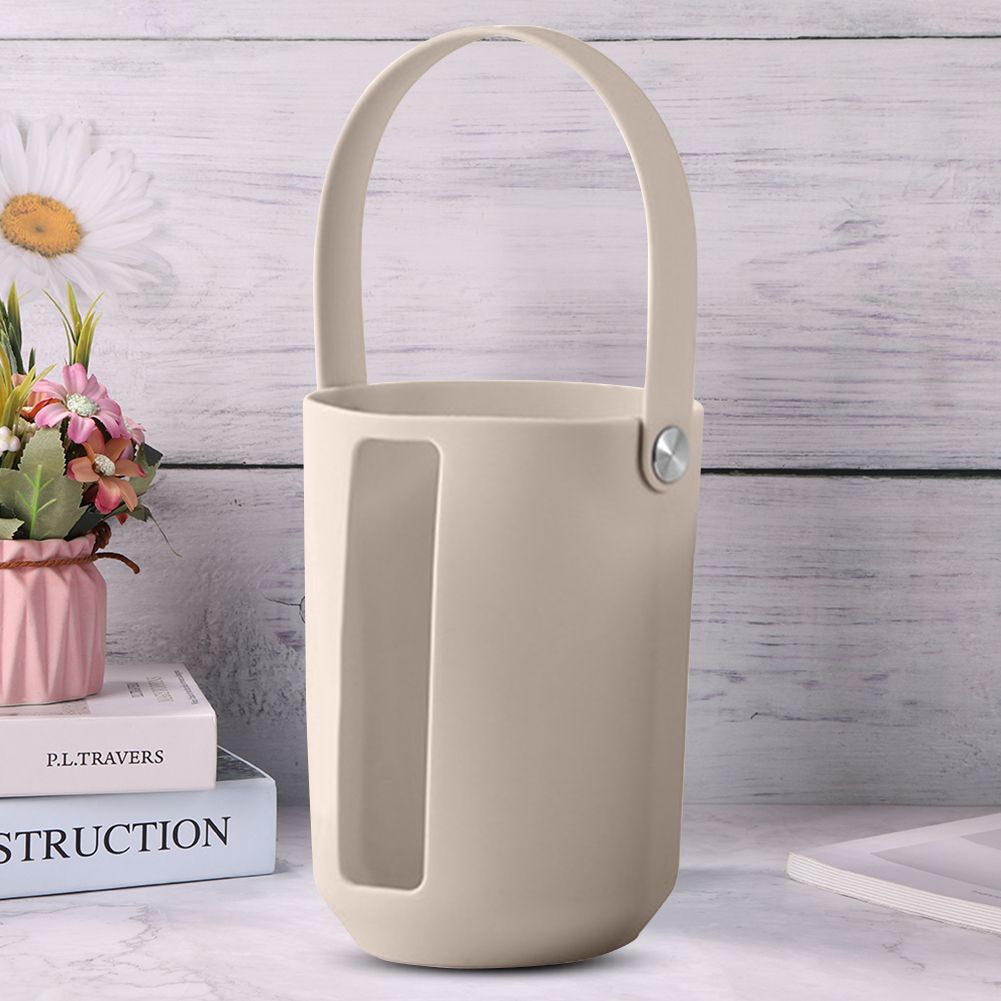
How can you find a balance between affordability and quality? Consider these factors:
- Compare features and materials across different price points
- Look for sales or discounts on premium brands
- Consider the frequency and intensity of your play
- Factor in the potential cost of replacing cheaper, less durable options more frequently
Is it worth investing in a more expensive cup? In many cases, yes. Higher-priced options often offer superior protection, comfort, and durability. However, mid-range options can also provide excellent value for recreational players or those on a budget.
Considering Brand Reputation and Customer Reviews
When choosing a protective cup for lacrosse, the reputation of the brand and feedback from other players can provide valuable insights.
Why is brand reputation important in selecting lacrosse gear? Established brands with a strong presence in the sport often have:
- Extensive research and development in their products
- Rigorous testing processes
- A track record of producing reliable protective gear
- Responsive customer service
How can customer reviews guide your decision? Reviews from other lacrosse players can offer real-world perspectives on:

- Comfort during extended gameplay
- Durability over multiple seasons
- Effectiveness in preventing injuries
- Ease of maintenance and cleaning
Interpreting Customer Feedback
When reading reviews, look for patterns in feedback rather than focusing on individual experiences. Consider the following:
- Are there consistent praise or complaints about specific features?
- Do reviewers mention how the cup performs in different playing positions?
- Are there any recurring issues with fit or sizing?
- Do long-term users report satisfaction with the product?
Adapting to Different Playing Styles and Positions
Different positions and playing styles in lacrosse may require specific features in a protective cup. Understanding these nuances can help you choose the most suitable option for your role on the field.
How do cup requirements differ for various positions?
- Attackmen: Lightweight, flexible cups for agile movements
- Midfielders: Balanced protection and mobility for versatile play
- Defenders: Robust cups with extended coverage for physical encounters
- Goalies: Extra padding and wider coverage for shot-blocking
What features should aggressive players look for? If you have a particularly physical playing style, consider cups with:

- Reinforced impact zones
- Additional padding in vulnerable areas
- Secure fastening systems to prevent shifting during collisions
- Durable materials that can withstand frequent impacts
Customizing Protection for Your Game
Some players prefer to fine-tune their protective gear for optimal performance. Consider these customization options:
- Combining different brands of cups and jock straps for a personalized fit
- Using additional padding or compression shorts for supplementary protection
- Experimenting with various cup sizes to find the perfect balance of coverage and mobility
Remember, the best protective cup for lacrosse is one that allows you to play confidently and comfortably, regardless of your position or style of play.
Staying Updated with Innovations in Protective Gear
The field of sports protective equipment is constantly evolving, with new technologies and materials being introduced regularly. Staying informed about these innovations can help you make better decisions when selecting or upgrading your lacrosse cup.

What are some recent innovations in protective cup technology?
- Advanced impact-absorbing materials like D3O
- 3D-printed cups for customized fit
- Smart fabrics that enhance breathability and moisture management
- Eco-friendly, sustainable materials for environmentally conscious players
How can you stay informed about new developments? Consider these strategies:
- Follow reputable lacrosse equipment manufacturers on social media
- Subscribe to lacrosse gear review websites or YouTube channels
- Attend sports equipment trade shows or lacrosse conventions
- Engage with your local lacrosse community and share knowledge
Evaluating New Technologies
When considering newly introduced protective cup technologies, ask yourself:
- Has the technology been tested in real-game situations?
- Are there independent studies supporting the claimed benefits?
- How does the new technology compare to traditional options in terms of comfort and protection?
- Is the cost justified by the potential performance improvements?
Remember, while innovations can offer exciting possibilities, it’s essential to prioritize proven protection and comfort over novelty features.

By considering these essential factors – comfort and fit, protection and safety, breathability and ventilation, durability, affordability, brand reputation, position-specific needs, and technological innovations – you’ll be well-equipped to choose the best protective cup for your lacrosse needs. This crucial piece of equipment will not only safeguard you from potential injuries but also contribute to your overall performance and confidence on the field.
Focus on Comfort and Fit
When choosing a protective cup for lacrosse, one of the most important factors to consider is comfort and fit. An ill-fitting or uncomfortable cup can cause distractions on the field, hamper athletic performance, and potentially lead to injuries if it shifts out of place. The best lacrosse cups have an ergonomic design contoured to the shape of the athlete’s body for a secure and customizable fit.
Look for cups with adjustable straps, stretch jock fabrics, and molded cups that conform to your anatomy. The cup should fit snugly without restricting range of motion or causing chafing, rubbing, or irritation during intense game play. Carefully measure your waist size and consult sizing charts to find the right cup size for you. Trying on different cups and jock straps is recommended for finding an optimal personal fit.
Cups with ventilated mesh, moisture-wicking fabrics, and breathable designs will be more comfortable to wear for long periods of time. Prioritize cups crafted from lightweight materials to avoid fatigue and allow freedom of movement. Some players prefer a compression fit for maximum security and minimal shifting, while others opt for a loose fit with extra room in the cup pouch area.
Consider your personal preferences – do you want full coverage or a low profile fit? Look at the thickness and placement of protective padding and opt for maximum coverage across vulnerable areas. A cup that is too small can be painful and potentially dangerous, while an oversized cup may feel bulky and awkward on the field. Finding the right balance of comfort, performance, and protection should be the top priority.
Test different cups in practices and simulations before committing to a model for games. Break in the cup so it molds to your body. Having a properly fitted, comfortable lacrosse cup you hardly notice while wearing it will give you the confidence to perform your best.
Prioritize Protection and Safety

When playing a high-impact sport like lacrosse, protective gear is essential for minimizing injury risks during games and practices. One of the most vulnerable areas of the body is the groin, making a properly fitted protective cup one of the most important pieces of equipment for all lacrosse players.
Lacrosse involves high speed running, cutting, pivots, dodges, checks, and contact. Without adequate protection, the testicles and surrounding pelvic area are susceptible to bruising, trauma, and more serious testicular injuries. When evaluating lacrosse cups, prioritizing protection and safety is key.
Look for cups constructed with dense, shock-absorbing padding molded for coverage across the entire groin region. Multi-layer foam and ventilated gel padding increase protection and comfort. Rigid polyethylene or carbon fiber shells add an extra layer of security and impact resistance compared to soft cups alone.
Ensure the cup has an anatomical shape and extended sidewalls to protect the testicles from lateral blows and slashes. Well-designed cups disperse and deflect impacts away from the body. Breathable compression shorts with protective padded girdles can provide supplementary pelvic bone and hip padding.
For goalies, consider cups with extra thick foam padding on thighs and stomach areas for blocking shots. Field players running full speed should opt for streamlined, lightweight protection focused on the groin. Avoid cups with metal or plastic edges that could potentially cause injury in high contact collisions.
Carefully read product descriptions to understand the protective technologies utilized. Search for cups made of innovative materials like carbon nano-tubes and dual density foams. Seek out customer reviews from lacrosse players to hear real world feedback on a cup’s protection level.
While protection is vital, breathability and comfort are also key – an overly rigid or restrictive cup can potentially hinder performance. Find the right balance of maximum safety within your budget. Trying on different cup styles and taking experimental falls while wearing them can help determine the best option.
Protecting the body’s most sensitive areas ensures you can play hard with confidence and peace of mind. Prioritizing protection and safety when selecting a lacrosse cup allows you to focus on the game, not your gear.
Consider Breathability and Ventilation

When playing intense sports like lacrosse, proper ventilation and breathability are essential considerations for comfort and preventing overheating. The groin area is especially prone to sweat buildup, chafing and irritation during athletic activity. When shopping for the best protective cup for lacrosse, be sure to prioritize breathable materials and ventilated cup designs.
Look for cups and jocks made of lightweight, moisture-wicking fabrics that draw sweat away from the skin. Mesh fabrics, ventilated pouches and strategic cutouts allow for enhanced air circulation to keep you cool and dry. Breathable compression shorts worn over the cup can also improve airflow and evaporation.
Proper ventilation helps prevent fungal and bacterial growth that can lead to rashes and skin infections in the groin area. Allowing heat and perspiration to escape keeps you comfortable and focused on the field. Overheating in the crotch region can quickly become a painful distraction.
Carefully inspect cup samples and product images looking for visible airflow vents, perforations and breathable fabrics. Read product descriptions and customer reviews to confirm adequate ventilation based on real-world use. Some synthetics like spandex and nylon have less breathability than natural fibers.
In hot, humid playing conditions, well-ventilated cups are essential. Even in cold weather, the groin region heats up quickly compared to the rest of the body. Proper airflow keeps you cool, dry and comfortable in any climate or temperature conditions during intense game play.
Some lacrosse cups feature removable pads or liners for adjustable ventilation levels. This allows you to increase breathability on hot days while adding insulation layers when needed. Airflow is also important for proper hygiene and reducing odor buildup over time.
While protection is the top priority, breathability and ventilation should not be overlooked. A cup that causes excessive sweating or discomfort can negatively impact performance. Finding a design that balances safety, comfort and airflow is key to enhancing your lacrosse game.
Look for Adjustability and Customization
Finding the perfect fit is crucial for comfort, protection and performance when selecting a protective cup for lacrosse. Being able to customize and adjust the cup to your body is an important feature to look for when shopping.
Lacrosse cups with adjustable waistbands, multiple strap configurations and removable padding allow you to tune the cup for ideal comfort and security. This ensures a stable, tailored fit that won’t shift or bounce during intense athletics.
Straps and belts with velcro or sliding adjustments give you flexibility to tighten or loosen the cup against your body. Some designs allow you to change strap angles and orientations for optimal positioning. Removable pads let you add or reduce thickness as needed.
Opt for jock and cup systems with interchangeable pouch sizes so you can fine tune the compression fit across your anatomy. Experiment with different tightness levels and make micro-adjustments for just the right feel and snugness.
Look for cups that come bundled with multiple jock styles – compression shorts, thong, jock strap, etc. This allows you to test which provides the best athletic support for your needs. Different body types and personal preferences demand customizable options.
An adjustable cup better accommodates your changing needs as you advance in the sport. Youth just starting out usually require a different fit than college level players. Your needs may evolve over a sports career or season.
Before committing to a particular model, read product details and reviews to confirm sufficient adjustability is available. Testing different fit configurations during training helps dial in the perfect setting for game time.
With an adjustable protective cup for lacrosse, you can experiment and tweak the fit for optimal comfort, support and security during play. A “one size fits all” cup may compromise protection and performance.
Choose Youth Sizing Options

Lacrosse players of all ages require protective gear, but finding a properly fitted cup for youth can require some extra considerations. Children and adolescents have developing bodies and smaller frames demanding cups designed specifically for young athletes.
Many leading cup brands offer size ranges for boys and teens. Consult individual sizing charts to ensure a proper fit based on age, weight and waist size. A cup sized for adults can be dangerously improper and uncomfortable for kids and young teens.
Look for youth cups with flexible adjustable straps to accommodate growth over a season or athletic career. Removable and swappable pads allow sizing modifications as the child’s body matures. Prioritize breathable fabrics to prevent irritation and overheating.
Consider the child’s level of physical development when selecting padding thickness and cup compression levels. Just beginning youth players often benefit from a more minimal low-profile design offering basic protection without impeding movement.
Involve young athletes in the fitting process to get their feedback on comfort and mobility. Take growth spurts into account and allow room for expansion as their bodies change. A snug fit ensures security without restricting blood flow or motion.
Reinforce the importance of wearing a cup at all practices and games to instill vital health and safety habits. Lead by example – coaches and parents should model proper protective gear use.
For families with multiple young lacrosse players, consider cost-effectiveness when purchasing youth cups. Removable pads make it easy to hand down cups to younger siblings.
While youth cups protect a child’s vulnerable developing body, they also allow athletic participation building skills, confidence and teamwork. With the right sizing and fit, young players can focus on enjoying the sport safely.
Compare Popular Cup Brands and Models
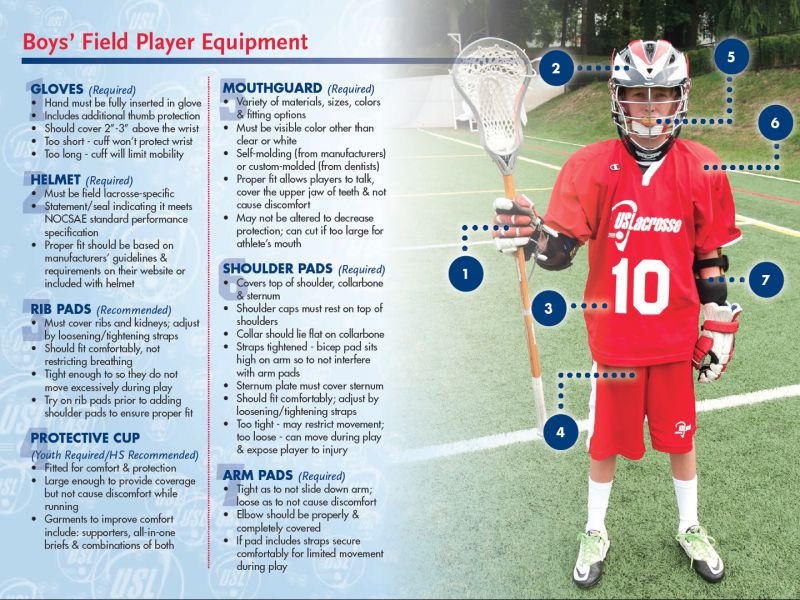
With so many lacrosse cup brands and models available, it can be difficult to determine which offer the best fit, protection and value. Comparing features and construction across top brands helps identify optimal choices suited for your needs and budget.
Leading athletic protection companies like Nutty Buddy, Shock Doctor, and McDavid offer a range of cup sizing with advanced ventilated padding and ergonomic designs. Look for established brands endorsed by pro athletes or sports organizations.
Evaluate available cup materials from brand to brand like carbon fiber, polyethylene plastic, elastomer gels, and various foam types. Compare thicknesses and rigidity of protective padding layers. Note adjustable and interchangeable components.
Browse product photos and diagrams to understand cup shape, coverage and ventilation points. Watch for newer models advertising innovative safety advancements. Search for videos of products being rigorously impact tested.
Weigh pros and cons of big name national brands versus smaller niche companies specializing in lacrosse gear. Boutique brands cater optimized designs specifically for the sport.
Carefully check sizing charts when comparing brands, as some run small or large. Read customer reviews to learn how different models fit and feel during actual use. Search forums for brand and model discussions.
Consider brand reputation and years in business when evaluating quality and construction. Established companies often provide better warranty support if defects arise. Newer brands take risks on fresh innovations.
Comparing protective cup brands and models takes some research, but ensures finding the highest quality protection optimized for your lacrosse needs, playing style and budget.
Understand Jockstrap Styles and Support
A properly fitted jockstrap is crucial for holding a protective cup securely in place during intense lacrosse competitions and practices. Understanding the different jockstrap styles and support features allows finding optimal athletic protection.
Classic jock straps use an adjustable waistband with leg straps that run under the buttocks to a frontal pouch holding the cup. This style offers full access for changing cups quickly.Jock shorts add a bottom to the leg straps for more coverage and ventilation.
Compression shorts come with built-in pouches to hold cups tight against the body while wicking moisture. Slip shorts have pockets to insert cups and can be worn under equipment.
Consider heavier duty straps and waistbands for maximum support and stability. Wider belts spread force across the hips better. Shock absorbing jocks cushion blows and impacts transferred to the cup.
Look for non-slip silicone lining the leg and waist straps to prevent shifting and keep the cup anchored securely. Well positioned leg straps reduce chafing while stabilizing the cup.
Prioritize breathable technical fabrics with moisture wicking properties to keep the groin area cool and dry. Antimicrobial materials inhibit odor buildup and bacterial growth.
Match your cup with an appropriate jock best suited for your lacrosse position and personal preferences. Goalies may opt for classic straps, while field players choose integrated shorts.
Trying different jock styles with your cup during practices determines the best system before games begin. A loose unstable cup risks injury, while an overly compressive fit reduces mobility.
With the right jockstrap supporting your protective cup, you can play confidently knowing this vital gear will remain securely in place throughout competition.
Learn About Cup and Jock Materials
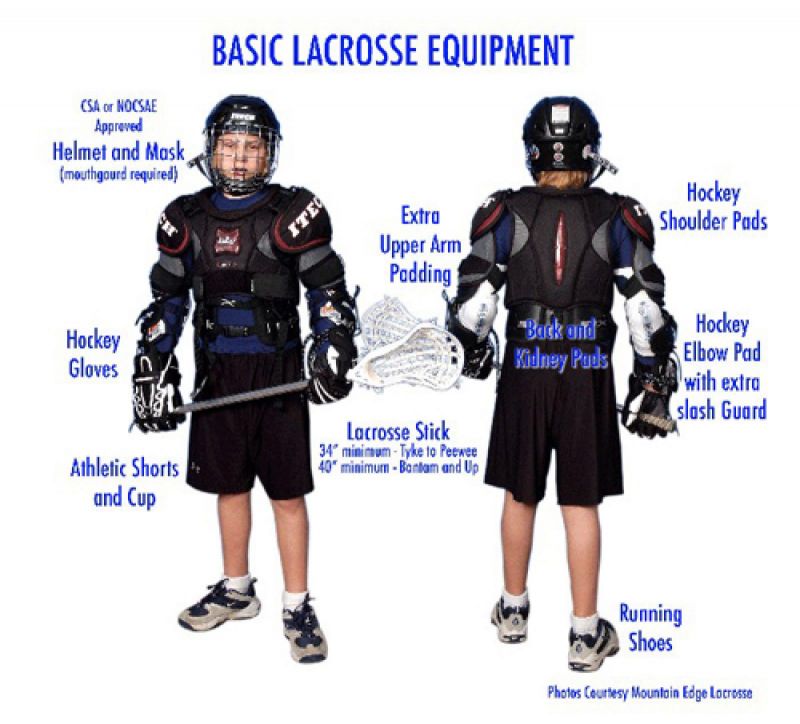
Protective cups and jocks for lacrosse come constructed from a variety of materials, each with their own properties and advantages. Learning key details about modern athletic cup materials helps select optimal gear.
High impact polycarbonate plastic shells offer rigid protection with ventilation holes for breathability. Flexible thermoplastic polyethylene adapts to body contours.
Injection molded elastomer gel contains shock absorbing compounds shaped for comfort. Dual density foams use soft outer layers and firmer inner cores to absorb force.
Fabrics range from moisture-wicking synthetics like spandex, nylon and polyester to natural breathable cotton blends. Mesh fabrics allow airflow circulation. Antimicrobial silver fibers reduce odor.
Carbon fiber and Kevlar composites provide lightweight impact dispersion for premium protection. Some new cups use proprietary polymers and nano-infused materials.
Jock straps feature silicone grip lining for non-slip security and adjustable Velcro fasteners for customized fits. Pouches come contoured in stretch fabrics like neoprene.
Carefully read product details to understand specifications of the materials used. Watch for newer modern developments as brands innovate. Consider latex allergies when choosing materials.
Weigh benefits like breathability, sweat-wicking, adjustability, odor prevention, comfort stretch and impact absorption. Ensure the cup and jock work synergistically.
Testing different material combinations during practices determines ideal choices. The best lacrosse protective cup understands modern athletic materials and technologies.
Weigh Rigid vs Soft Shell Construction
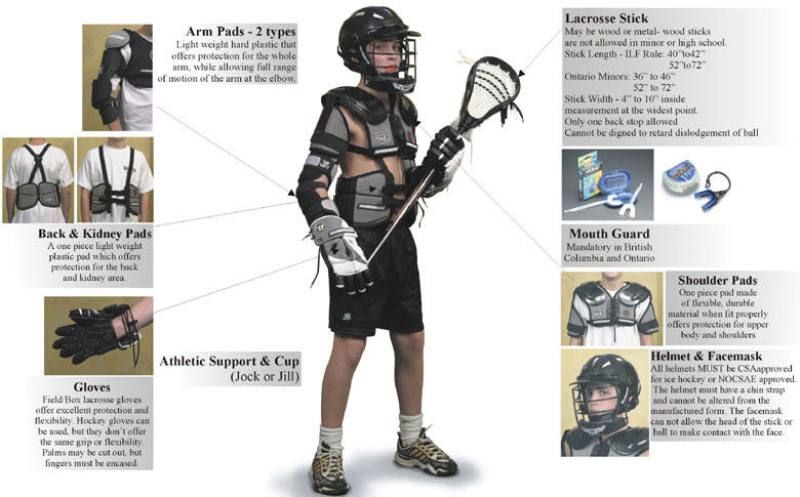
Lacrosse cups come constructed as either rigid shells or soft-sided designs, so weighing the tradeoffs of hard vs. soft materials is key for finding the right protective fit.
Rigid plastic and carbon fiber cups resist impact force for enhanced safety, but can restrict movement. Ventilation holes add breathability to solid shells. Some rigid cups feature softer padding inside.
Soft flexible cups mold to body contours for ergonomic padded coverage with maximum comfort and mobility. Multi-layer foam disperses shocks effectively. Gel perimeter rings enhance softness.
Consider your position and playing style – goalies and defense may prefer reinforced rigid protection for frequent close checks, while midfielders and attack need more mobility from flexible cups.
Ensure rigid cups have smoothed edges to avoid potential skin pinching or accidental cuts and scratches. Soft cups should retain padding thickness even when compressed by force.
Try on different shells and bounce in place to test stability and feel during movement. Evaluate from all angles for ideal anatomical fit. Weigh benefits like breathability and weight.
For cold weather play, soft shell cups offer better insulation and warmth. Well-designed rigid cups feature perforations and moisture-wicking liners for added comfort.
Blends of both rigid and soft construction provide customized protected zones with ergonomic shaping. Compare thicknesses and densities when evaluating options.
Choosing the right blend of rigid and soft surfaces, tailored to your position and needs, ensures confident competitive lacrosse with peace of mind.
Ensure Proper Padding Thickness
The protective padding inside a lacrosse cup plays a crucial role in shielding the groin from harm. Ensuring proper thickness, coverage and quality of cup padding materials is vital for safety.
Multi-layer foam constructions with ventilation channels provide optimal impact absorption and breathability. At least 1/4 to 1/2 inch padding is recommended for adequate protection.
Dual-density foams using softer outer layers around firmer inner foam spread and distribute shocks effectively. Memory foams mold to body contours for custom tailored coverage.
Advanced polymers like Poron XRD gel offer lightweight padding that stiffens on impact and enhances ventilation. Some pads feature anti-microbial and moisture wicking layers.
Inspect padding thickness and coverage areas on different cups. Prioritize designs with wrapping sidewalls and extended upper coverage for protected mobility.
Remove pads and feel their shock dampening compression properties. Assess overall cup rigidity and reinforcements. Watch for newer high-tech padding materials.
Consider supplemental hip and thigh pads for goalies needing extra coverage blocking shots. Field players require focused, balanced padding that won’t impede sprints.
Trying on cups during drills and practice confirms sufficient padding levels. You should hardly notice wearing a properly padded cup that moves naturally with your body.
Ideal padding gives you injury protection and confidence to perform your best knowing vulnerabilities are secured.
Choose Straps for Security and Mobility
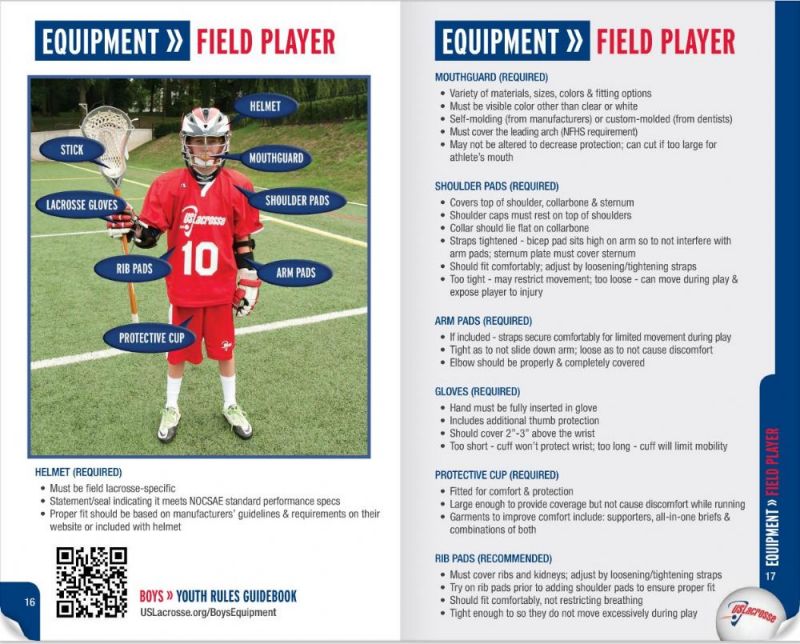
The jockstrap and cup system you choose for lacrosse should balance a secure supportive fit with unhindered mobility. Optimal straps stabilize the cup while allowing free natural movement.
Prioritize wide waistbands and leg straps, ideally with silicone grip, to keep the cup firmly anchored during intense activity. Snug fits around the thighs prevent the cup from shifting or rotating.
Look for straps made of stretch athleisure fabrics containing spandex or elastane to flex with your body mechanics while retaining strong hold. The best straps move seamlessly with you.
Positioning of leg straps affects comfort and security – diagonal cross-straps allow for more running mobility while vertical orientations keep the cup more stationary.
Adjustability is key – straps with velcro, sliding clips or laces provide a customized precision fit dialed to your needs for stability and freedom of motion.
Avoid straps, belts or buckles with hard edges or thick seams in high friction areas that could chafe during use. Softer padded straps prevent chafing and irritation.
Test different strapping styles and configurations during practices to find your optimal balance of security and mobility. Re-tighten straps as needed if the cup shifts unexpectedly.
Choosing supportive jock straps providing a stable cup foundation enables you to move and play freely without worrying about discomfort or embarrassing accidents.
Prioritize Groin and Pelvic Protection
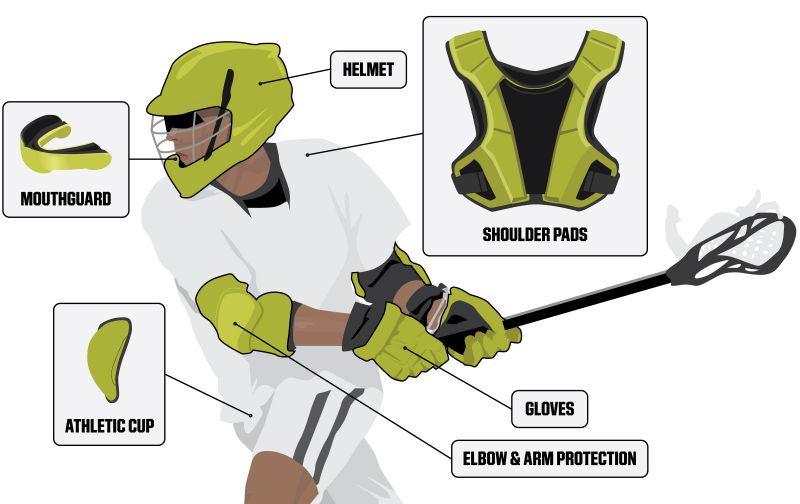
Finding a protective cup optimized specifically for lacrosse means prioritizing coverage and construction to protect the groin and surrounding pelvic region.
Look for cup shapes contoured to the anatomy with adequate coverage for testicles and adapter areas. Extended sidewalls and upper padding protect from slashes and lateral blows.
Multi-layer foam pads with ventilation channels absorb direct frontal impacts while dispersing force away from the body.
Reinforced rigid plates centered over vital areas provide an extra shield against ball and stick shots to unprotected zones. Perforations allow flexibility.
Consider supplemental girdle padding or padded compression shorts to add thigh, hip and tailbone protection from checks and slides. Goalie knee pads are also advised.
Ensure the cup fits snugly against the pelvis with minimal gaps that could expose tissue to harm. Straps should distribute weight across hips and waist.
Test different cups by simulating game conditions and impacts. Bounce and pivot to detect shifting. Have teammates check for gaps in coverage.
Ideal lacrosse protection prioritizes shielding the groin while enabling free flexible movement. A poorly fitting cup risks painful injury from inevitable blows.
With advanced cup technology protecting areas prone to harm, you gain the confidence to give 100% focus to your competitive performance.
Learn Proper Sizing and Fit Tips
Getting accurately sized for a protective cup is crucial for maximizing comfort, stability and protection when playing lacrosse. Follow key fitting steps and size chart guidelines to dial in an ideal cup.
Measure your waist size above the hips to determine appropriate strap dimensions. Leg strap lengths should wrap halfway around thighs for security.
Consult individual brand sizing charts online and compare against your physique measurements to identify suggested cup sizes.
Trying on multiple cup sizes determines the best fit – snug enough to stay put during intense play without restricting mobility or circulation.
Ensure the cup fully contains and protects testicles while covering surrounding pelvic areas. Extended sidewalls guard thighs.
Carefully place cup inside jock pouch so padding faces forward with logos oriented properly. Leg straps should anchor at butt cheeks.
Test different jock styles like briefs, compression shorts, and supporters to find preferred combination with the cup.
Walk, jog, squat, and stretch to gauge comfort and security. Have a coach inspect for gaps while moving vigorously.
Break in your cup during practices before game use. Make micro-adjustments and regularly confirm proper placement.
A properly fitted cup stays anchored in position, keeping you safe, agile and focused on lacrosse.
Read Reviews from Other Players
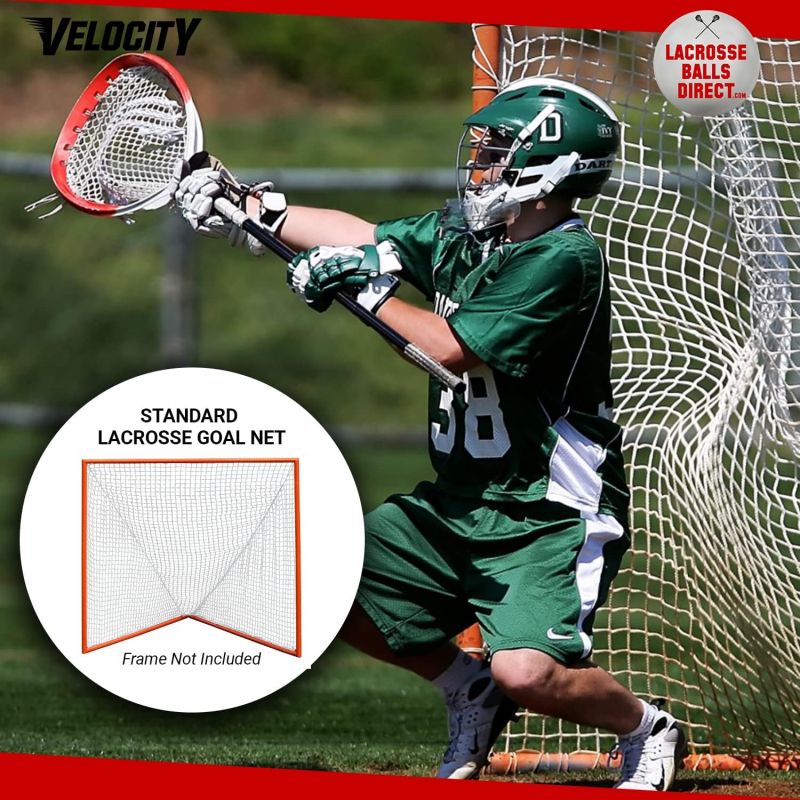
With so many lacrosse cup brands and models to choose from, reading reviews from other players can provide valuable real-world feedback. Their firsthand experiences help identify optimal gear.
Search for lacrosse forums and communities discussing protective equipment to find detailed accounts of products owned and tested. Sort reviews by sport to ensure relevancy.
Look for common consensus around specific cup models for aspects like durability, ventilation, comfort and sizing accuracy. Note any recurring issues reported.
Watch for reviewers mentioning their position, skill level and years using the cup model. Goalies and midfielders have different needs than casual players.
See if reviewers compare multiple brands used to provide context and contrast of features. Details on straps, fabrics and padding properties are helpful.
Consider the sources – authoritative lacrosse sites and coaches reviewing gear may hold more weight than random opinions. Watch for potential bias.
Read both positive and negative observations to form a balanced picture. Note differences in fit and feel on youth versus adult physiques.
Check that recent reviews confirm the cup has kept pace with latest innovations and remains recommended. Things change over time.
While personal trial is ideal, input from fellow lacrosse players goes a long way when selecting quality protective gear you can trust.
Compare Prices and Value
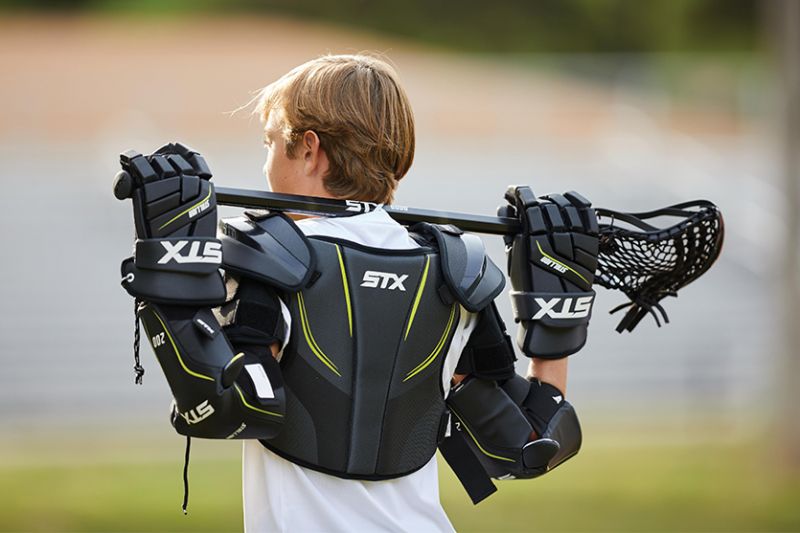
Protective lacrosse cups range widely in cost based on materials, technology, and brand reputation. Comparing prices and features helps find high quality gear providing good value.
Entry-level cups generally cost $10-30, mid-range $30-60, and pro-grade $60-100+. Consider budget, but don’t sacrifice quality and protection by choosing the cheapest option.
Look for sales discounts on last year’s model cups as brands update annually. Older versions often provide substantial savings.
Weigh benefits like proprietary padding materials, customizable components, and innovative ventilation systems against price. Advanced technologies command premium pricing.
Consider value additions like including multiple jocks, interchangeable pads and compression shorts. Replaceable parts extend usefulness over time.
Compare warranty protection between brands. Established companies typically offer longer guarantees against defects. Read fine print exclusions.
Search for bundles and combo deals packaging cups with other protective gear. Buying sets can optimize savings.
While expensive cups don’t automatically equate to better performance, recognize that quality materials and engineering add cost. Judge value accordingly.